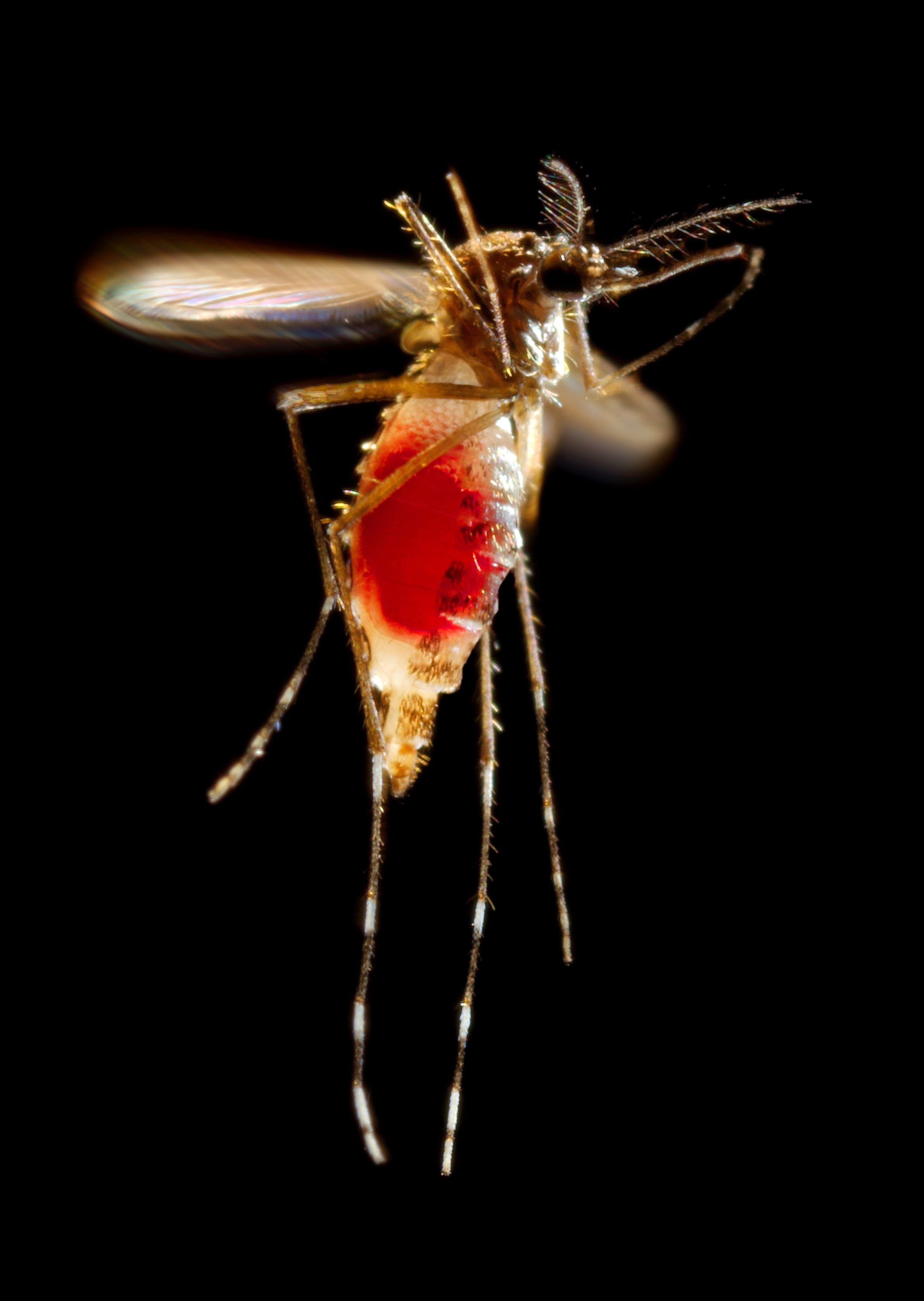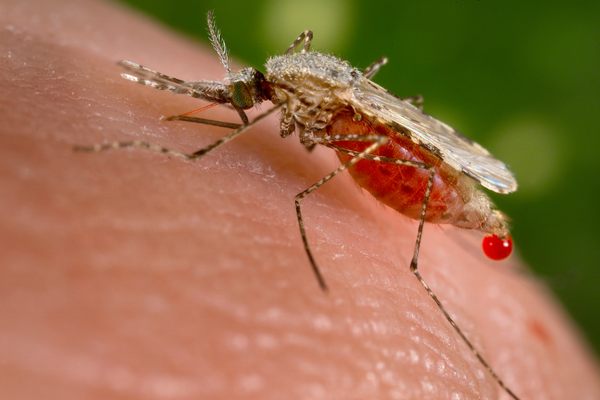How to Mail Mosquitoes
It involves a syringe.

The syringe was filled with so many mosquitoes that they hardly even looked like insects anymore. Their wings, antennae, and other appendages were pressed so tightly together that the tube seemed to be holding a single substance—maybe even something hard, like a pellet or a puck.
“We were almost positive that almost all of them would die,” says Hae-Na Chung, a technician in the biologist Immo Hansen’s Molecular Vascular Physiology Lab at New Mexico State University. “We thought they were completely smashed.”
Chung and her collaborators recently set out to see how many Aedes aegypti mosquitoes they could fit into a 10-milliliter tube, and how those insects would fare inside it. To load their lab-reared insects into the tubes, they first anesthetized the mosquitoes for a few minutes on ice (carbon dioxide works, too), and then used feathers to sweep them into the vessel. The mosquitoes are pliable and sluggish in this state, Chung says. That’s when the researchers depress the plunger and compress them down to one cubic centimeter.
The reason to cram mosquitoes in like sardines? Ultimately, it comes down to limiting populations of insects that can transmit disease. These mosquitoes can be vectors for Zika and other viruses. In places such as Las Cruces and Miami, where mosquito populations are booming, one strategy for getting numbers down is to introduce sterile males.
In the past, this somewhat counterintuitive method of introducing insects to get rid of insects has evicted the tsetse fly from Zanzibar, and the parasitic screw-worm fly from many places across Central America, Mexico, and the southern United States. Researchers nip mosquitoes’ reproductive capacity in many ways, such as tweaking their genetic makeup, blasting them with X-ray radiation, or introducing bacteria, as Miami-Dade County did in January.
But tinkering with the reproductive capacity is only the first step—the next part involves actually getting the doctored males to mate with the females. And that requires turning scores of mosquitoes loose, exactly where researchers want them.
That’s easier said than done. While these swarms of impotent males aren’t voracious biters, they’re not intrepid fliers, either. Most mosquitoes don’t roam beyond 200 meters from where they hatch. That means that mosquitoes designed to be released on a population-control mission have to be ready to flit into action.

While researchers are still trying to get a handle on exactly how many mosquitoes they’d need to release in order to get rid of the existing populations, the general consensus, so far, is that it’s in the hundreds of thousands, even for a small area. Immo Hansen oversees a lab team working in a study area that measures 250 x 250 yards; they release around 5,000 male mosquitoes per week, with a bit of variation according to the season and other factors that affect the overall mosquito population.
What’s clear is that researchers need a reliable way to move massive amounts of mosquitoes. In a new paper in the Journal of Insect Science, lead author Chung, co-author Hansen, and their collaborators describe what happened when they took their insects out of the lab and into a courier plane.
The team sent some of their mosquito-packed tubes from Las Cruces to California in an overnight FedEx plane. The tubes were packed in Styrofoam and kept cool. On the other side, a team at University of California, Davis combed through the groggy mosquitoes under a microscope to see how they’d fared.
It turned out that the densely packed ones—240 mosquitoes compressed into a single cubic centimeter—survived the trip well, with the exception of some missing scales and dinged wings. The researchers’ hypothesis, Hansen says, is that vibrations “shook ‘em to death when they’re not tightly packed.”
Next, the team will assess how the close quarters and bumpy ride affect the mosquitoes’ reproductive fitness. But, for now, it seems there’s something to be said for being snug as a bug.












Follow us on Twitter to get the latest on the world's hidden wonders.
Like us on Facebook to get the latest on the world's hidden wonders.
Follow us on Twitter Like us on Facebook